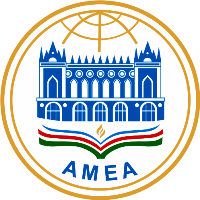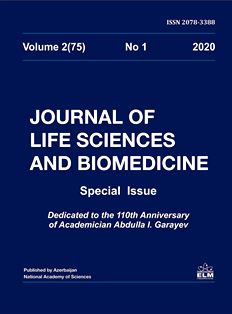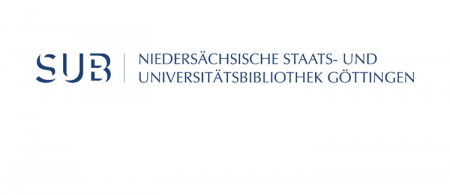
On the preparation of the III edition of the "Red Book" of the Republic of Azerbaijan: Red List of Karabakh fauna E.I. Ahmadov
Research article: On the preparation of the III edition of the "Red Book" of the Republic of Azerbaijan: Red List of Karabakh fauna.
Author (s) E.I. Ahmadov
Journal of Life Sciences & Biomedicine, vol. 3(76), No 2, p. 11-23 (2021)
DOI: http://dx.doi.org/10.29228/jlsb.16
Institute of Zoology, Azerbiajan National Academy of Sciences, A. Abbaszade Str., 504 Block, 1128 Pass., Baku AZ1004, Azerbaijan
For correspondence: parazitolog@mail.ru
Received: September 10, 2021; Received in revised form: September 27, 2021; Accepted: October 11, 2021
The article has been developed relying on the results of research conducted by the staff of the Institute of Zoology of ANAS before the occupation of Karabakh and surrounding areas by Armenia. According to previous years' research in Karabakh and surrounding areas, which have been under occupation for nearly 30 years, 56 species of insect fauna are rare, endemic and endangered. Of the 53 fish species registered in the Lesser Caucasus of Azerbaijan, 7 are included in the Red Book of Azerbaijan (2013), and 4 species are included in the IUSN Red List. It was determined that 12 species of fish are distributed in the Hakari River, and 13 species in the Basitchay and Okhchuchay rivers. In the Lesser Caucasus natural region, 4 out of 11 species of amphibians belonging to the batrakhofauna of Azerbaijan and 35 out of 63 species of reptiles belonging to the herpetofauna are registered. 1 species of tortoises, 10 species of lizards and 13 species of snakes are distributed in the fauna of Karabakh. One species of amphibians and 7 species of reptiles were included in IUCN and GK (2013). Prior to the occupation, 32 species out of about 200 bird species registered in 16 orders and 57 families in Karabakh and its environs were included in the II Edition of the Red Book (2013). Most of these species are included in the lists of international conventions (Bern, Bonn, CITES, AEWA). Prior to the occupation of Karabakh, 24 species out of 75 species of mammals belonging to 6 orders were included in the Red Book of Azerbaijan (2013). Five of them are also included in the Red List of the International Union for Conservation of Nature (IUSN). The second edition of the Red Book of Azerbaijan, published in 2013, included 223 species of animals that are rare, endangered and in need of protection. Of these, 1 species belongs to the class Oligochaeta, 1 species Crustacea, 1 species Mollusca, 77 species Insecta, 9 species Pisces, 6 species Amphibia, 14 species Reptilia, 72 species Aves, 42 species Mammalia. The third edition of the RB, which is scheduled for publication in 2023, will embrace 279 species of rare and endangered species. The issue of medical leech and 2 bony fish species proposed to be included in the 3rd edition of the Red Book of Azerbaijan will be clarified. It is proposed to remove 77 species of insects included in the second edition of the Red Book, 14 species in the third edition, and to increase the number of species on the updated list to 118 by adding 55 species. The list of amphibians (6 species) will not be changed, and the list of reptiles will include 6 additional species of reptiles. The third edition will consider the inclusion of 15 new species in the previous list, the second edition will consider the removal of 8 species of mammals from the list of mammal species and the inclusion of 1 species in the updated list of mammals.
Keywords: Fauna, invertebrate, vertebrate, Red Book, amphibian, reptile, fish, mammal, IUSN, order, family
REFERENCES
1. Taxonomic spectrum of Azerbaijani fauna.Vertebrates (2020) Baku: Science and education, 144 p.
2. Fauna of Azerbaijan (2004) Arthropods.Volume II.Baku: Elm, 338 p.
3. Fauna of Azerbaijan (2004) Vertebrates.Volume III.Baku: Elm, 620 p.
4. Red Book of the Republic of Azerbaijan (2013) Rare and endangered species.Second edition.Baku: 519 p.
5. Jafarova S., Bunyatova S. (2021) A herd spread in the Lesser Caucasus natural regionTypes of landslides.Karabakh Biodiversity, Soil and Water Resources: Past, Present and Futureyi.Online conference materials.See: s.69.
6. Huseinova E. (2021) Red beetles of the Karabakh region of Azerbaijan (Coleop) terra: Bup¬res¬ti-dae) based on the collection and literary data. Karabakh Biodiversity, Soil and Water Resources: Past, Present and Future yi. See: s. 74.
47. Rzaeva LM (2002) Halcyons (Hymenoptera, Chalcidoidea) Eastern Transcaucasia and their economic significance. Baku: Elm, 356 p.
48. Samedov NG, Mirzoeva NB (1982) Ecological-faunistic and zoogeographic groups of beetles-leaflets of the Lesser Caucasus of Azerbaijan. Entomological Review, 4: 795-806.
49. Sokolov VE, Tembatov AK (1989) Insecticides. Vertebrate Caucasus. M .: Nauka, 531 p.
50. Effendi R.E. (1971) Higher solutions of Azerbaijan, their biology, ecology, zoogeography and economic significance. Author's abstract. dis ... cand. biol. science. Baku: 31 p.m.
51. Snegovaya N.Y., Petrov V.A. (2019) A catalog of butterflies (Lepidoptera, Rhopalocera) of Azerbaijan. Acta Biologica Sibirica, 5 (3): 62-117. https://cites.org/eng/app/appendices.php























